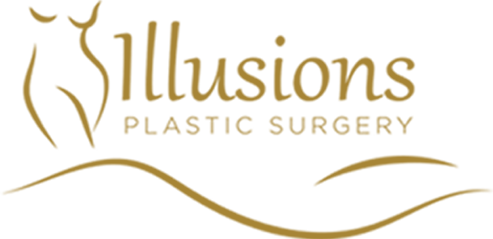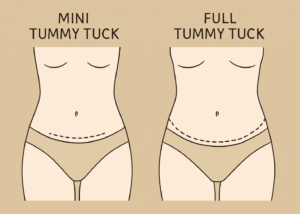Have you ever looked in the mirror and wondered how small changes to your nose could transform the harmony of your entire face?
If this question crosses your mind, you’re not alone. More than 352,000 Americans underwent rhinoplasty in 2020, according to data from the American Society of Plastic Surgeons.
But here’s something that might surprise you: there are two completely different ways to perform this procedure. And choosing between closed vs. open rhinoplasty can shape not only your results but also your recovery experience.
How does the closed technique work?
Closed rhinoplasty is performed entirely through the nostrils. Your surgeon makes all the incisions internally, which means no visible external scar after the procedure. Think of it as working inside a smaller space, where the surgeon’s technical skill plays an even bigger role.
During this technique, the surgeon accesses the nasal structures through small openings inside the nasal passages. The cartilage and bone are reshaped without fully separating the skin of the nose from the underlying framework.
That may sound like a clear advantage, but there are limitations you should understand before making your decision.
And how does the open approach work?
In open rhinoplasty, your surgeon creates a small incision on the columella — the narrow strip of tissue that separates your nostrils.
This additional incision allows the surgeon to lift the nasal skin completely, giving a full, direct view of the entire nasal structure.
Does it seem more invasive? Maybe. But this complete visualization offers possibilities that the closed technique simply cannot provide.
The resulting scar usually measures about 4 to 5 millimeters, and in most cases becomes almost unnoticeable after a few months.
Studies published in the Aesthetic Surgery Journal show that 95% of patients consider this scar insignificant after one year of follow-up.
Comparison between closed vs. open rhinoplasty
To help you visualize the differences more easily, take a look at the comparison below:
| Aspect | Closed rhinoplasty | Open rhinoplasty |
| Type of incision | Internal | Small incision on the columella |
| Access to structures | Limited but functional | Wide access with greater visibility |
| Perceived swelling | Less | May last longer |
| Recovery time | Generally shorter | May extend a bit longer |
| Common indication | Moderate adjustments | Complex and structural cases |
| Scar | Internal and invisible | External, small, and discreet |
This comparison helps show that closed vs. open rhinoplasty addresses different needs. The choice depends not only on personal preference but also on the nose’s anatomy, the degree of correction desired, and the technical assessment performed during the consultation.
What actually determines which technique you receive?
Your unique nasal anatomy plays a major role in this decision. The thickness of your skin, the strength of your cartilage, the current shape of your nose, and your specific aesthetic goals all work together to guide the choice.
An experienced surgeon does not choose arbitrarily between closed vs. open rhinoplasty. During your consultation at Illusions Plastic Surgery, you go through a detailed evaluation that includes:
- Three-dimensional analysis of your nasal structure
- In-depth discussion about your expectations
- Review of reference photos
- Assessment of your overall health and medical history
- Computer simulations when appropriate
Results noticed throughout the recovery
Patients tend to notice some differences between the two approaches:
- Closed rhinoplasty usually leads to less visible swelling at the beginning.
- Open rhinoplasty may leave the nasal tip more swollen during the first few weeks.
- The refinement of the final shape takes months in both techniques.
- The open approach often provides greater structural control over the shape of the nasal tip.
At Illusions, postoperative follow-up includes personalized guidance on compresses, rest, and movement, helping patients move through this phase with more comfort.
Common myths about closed vs. open rhinoplasty
Rhinoplasty often creates confusion, and some ideas appear repeatedly:
“The open technique always leaves a noticeable scar.” ❌
Most columellar scars fade discreetly and become almost unnoticeable over time. ✅
“The closed technique always produces a more natural result.” ❌
A natural look depends on the surgeon’s skill and the patient’s anatomy, not solely on the technique.✅
“The open technique makes recovery too long.” ❌
Recovery timelines vary from patient to patient, and many return to light activities within just a few days. ✅
How much should you expect to invest in this procedure?
In the United States, the average cost of rhinoplasty ranges between $5,000 and $15,000, according to 2023 data from the American Society of Plastic Surgeons.
The open technique generally positions itself in the higher range due to additional surgical time and increased complexity.
It’s worth remembering that your health insurance rarely covers cosmetic rhinoplasty. However, if you have documented breathing problems or deformities resulting from trauma, part of the procedure may receive coverage. This discussion should happen during your initial consultation.
Illusions Plastic Surgery offers financing options to make the procedure more accessible, allowing you to achieve the desired change without compromising your finances.
How do Illusions approach this decision with you?
In West Palm Beach, the team at Illusions Plastic Surgery understands that each nose tells a different story. The clinic doesn’t work with standardized approaches or automatic decisions between closed vs. open rhinoplasty.
Their consultation process involves:
- Detailed physical examination of the nasal structure
- Honest conversation about what each technique can achieve in your specific case
- Clear explanation of the advantages and limitations of each approach
- Analysis of previous results similar to your case
The surgeon’s experience with both techniques allows for a truly personalized recommendation, based on what will bring the best results for you – not on what might be more convenient or faster for the professional.
Ready to discover which approach would make the most sense for you?







